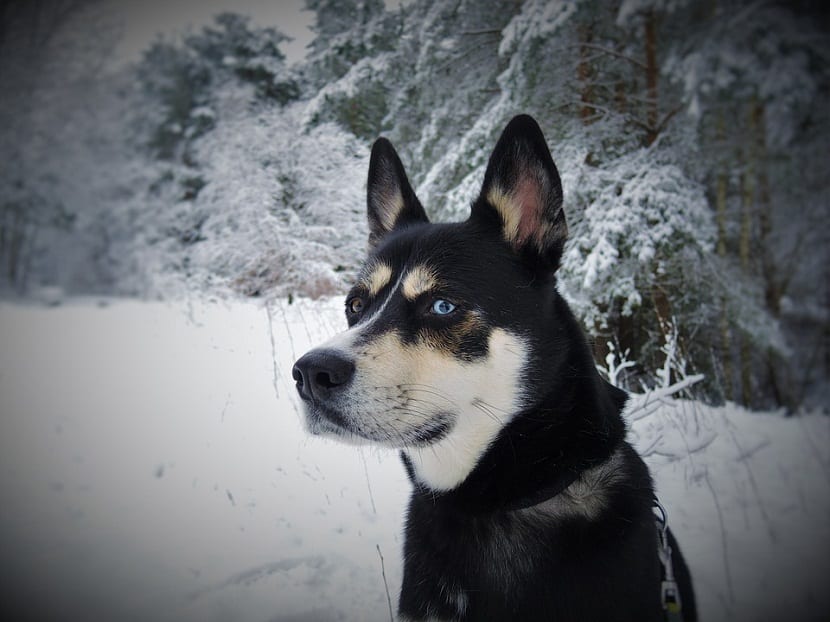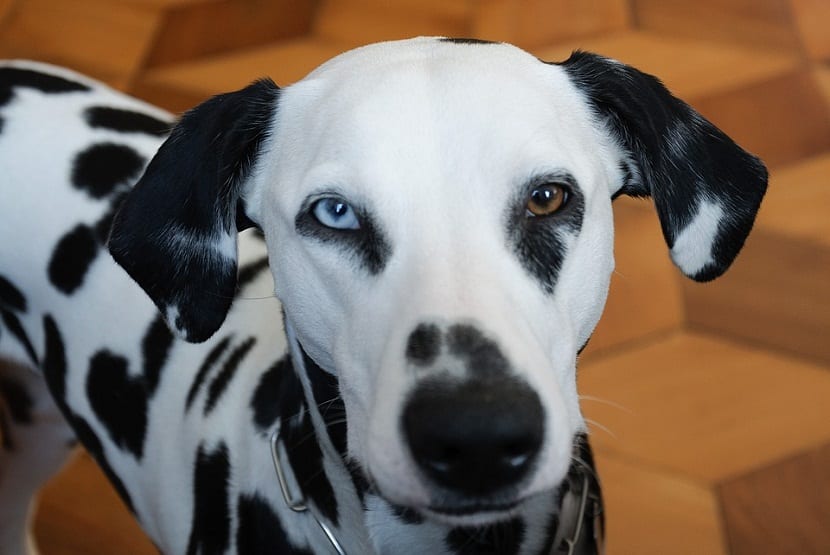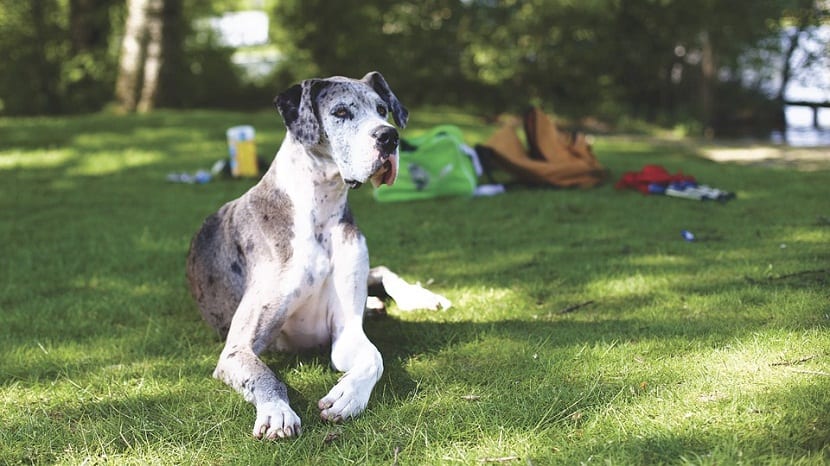
We know heterochromia as a condition that can affect each of the species in the world, which is also determined by genetic inheritance.
Taking into account the discoloration as well as the amount of melanocytes found in the iris, which are the protective cells found in melanin, we can observe the presence of one color or another.
Classes of heterochromia in dogs

Heterochromia iridium or also known as complete
This is the kind of heterochromia in dogs where we can see an eye of each different color.
Heterochromia iridis or also called partial heterochromia
Is when we can observe different shades in a single iris Of the dog.
Congenital heterochromia
This is the type of heterochromia that has an origin that is genetic.
Acquired heterochromia
This can become caused by trauma Either it is due to some disease, such as glaucoma or perhaps uveitis.
One of the curiosities that we can add about this condition is that complete heterochromia is not very common in humans, but if it is in the case of dogs or also in cats as an example. Besides, it is of great importance to emphasize that this is a vision that does not cause any alteration in the animal.
Some dog breeds that suffer from complete heterochromia
Eyes of a completely different color occur very often in dogs. Therefore, it is something that we can observe in some of the races and among some of them we can mention the following, the Siberian Husky and the Australian Shepherd.
Among the most important that we can highlight, is that in what is the case of the Siberian Husky and according to the standard of the American Kennel Club, dogs that possess one blue eye and one brown eye and in the same way it is allowed that they have partial heterochromia in one of the irises, as in the case of the American Leopard Hound.
The blue color and the brown color in the dog's eyes
The one in charge of giving that blue color as well as the pigmentation known as the butterfly of the nose of dogs is the well-known Merle gene.
This is a gene that also can cause partial heterochromiaAn example of this is showing an eye that is brown in color, an eye that is blue in color or it may also be that within the blue coloration of the eye there are flashes of brown color.

In the case of the Australian Shepherd Dog or in the case of the Border Collie, they are dogs that may possess the Merle gene, but another example may also be the Pembroke Welsh Corgi. Albinism and like the white spots that are found around the eyes in the same way, can be caused by this gene.
Each of the dogs found in the world are special regardless of their characteristics, among which is the heterochromia, they make each of these features distinctive as well as unique.
Some dog breeds that suffer from partial heterochromia
As we have already mentioned, in partial heterochromia the dog shows an eye that is multicolored, which means that we can observe completely different shades in a single iris of the dog. Therefore some of these breeds are the Great Dane, the Pembroke Welsh Corgi, the Border Collie and also the Australian Cattle Dog.
The Merle gene has the ability to dilute pigments randomly of the nose, as well as of the eyes and observing the eyes of a blue color can represent a consequence of the loss of pigment in that layer.